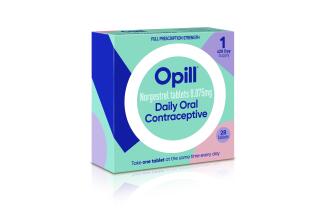Is Avastin a cost-effective treatment for ovarian cancer patients?
- Share via
Doctors and patients eager for better ways to treat advanced ovarian cancer were encouraged by two new studies showing that adding Avastin to traditional chemotherapy drugs allowed women with the disease to live a few months before their cancer returned or worsened. The two large, international studiescredited Avastin with providing an additional 3.8 months and 3.6 months of “progression-free survival.” (The reports in Thursday’s edition of the New England Journal of Medicine weren’t able to say whether the women who took Avastin lived longer overall.)
“I think we finally have a third component of treatment [Avastin] … that may greatly complement our therapeutics for ovarian cancers,” Dr. Robert Burger, the surgical oncologist who led one of the studies, told my colleague Amina Khan.
But even if Avastin is effective in treating ovarian cancer, the deadliest of all gynecological cancers, that doesn’t mean the drug (known generically as bevacizumab) is cost-effective.
So says a study published in April in the Journal of Clinical Oncology.
Researchers from the Ohio State University College of Medicine and the University of Alabama at Birminghamset out to estimate the financial cost of adding Avastin to the traditional combination of chemotherapy drugs, paclitaxel and carboplatin. Using data on an ovarian cancer trial that was presented at a meeting in 2010, the researchers assumed that patients who were treated without Avastin had 10.3 months of progression-free survival; patients who got Avastin during their initial chemotherapy treatments had 11.2 months of progression-free survival; and patients who got Avastin during chemo as well as 16 maintenance doses afterward had 14.1 months of progression-free survival.
Estimates of treatment costs for ovarian cancer were based on Medicare reimbursement rates.
Overall, the researchers calculated that standard treatment costs $2.5 million; adding Avastin to the initial treatment raised the cost to $21.4 million; and using Avastin over the long-term added up to $78.3 million.
To convert those figures into a measure of cost-effectiveness, they calculated the cost of each treatment per year of progression-free survival. They found that the cost-effectiveness ratio for standard therapy was $247,616 – far less than the $1.9 million for limited Avastin treatment and the $5.6 million for maintenance treatment with the drug.
But even those numbers don’t tell the whole story. Next, the researchers calculated a figure called the “incremental cost-effectiveness ratio.” This is the cost per year of progression-free life saved by adding Avastin to standard therapy. Using the standard chemo regimen as a baseline, they calculated that the ICER for short-term Avastin treatment was $479,712 and the ICER for longer-term Avastin treatment was $401,088. (The lower figure for the more expensive treatment reflects the fact that it provides more bang for the buck.)
What do these figures actually mean? The researchers write that traditionally, a drug is deemed to be cost-effective “if its ICER is less than $50,000 per life-year saved.” Avastin clearly fails that test for ovarian cancer. But is there anything that could change it?
Probably not, the authors write. If the price for Avastin were slashed by 75%, the ICER would fall to $140,496 for short-term Avastin treatment and to $99,504 for longer-term Avastin treatment. Both of those figures are still well above the usual $50,000 threshold.
The other way to improve the numbers is for Avastin to become more effective and produce more months of progression-free survival. In order to get the ICER to the desirable level of $35,976, short-term treatment would have to result in 21.2 months of progression-free survival, nearly double the actual benefit. (It’s practically impossible for the maintenance strategy to hit its numbers this way – even if progression-free survival increased from 14.1 months to a hypothetical 32.1 months, the ICER would still be $106,836, the researchers calculated.)
The sobering conclusion of this study: “The addition of bevacizumab to standard chemotherapy in patients with advanced ovarian cancer is not cost effective.”
A summary of the study is available here.
Return to the Booster Shots blog.





